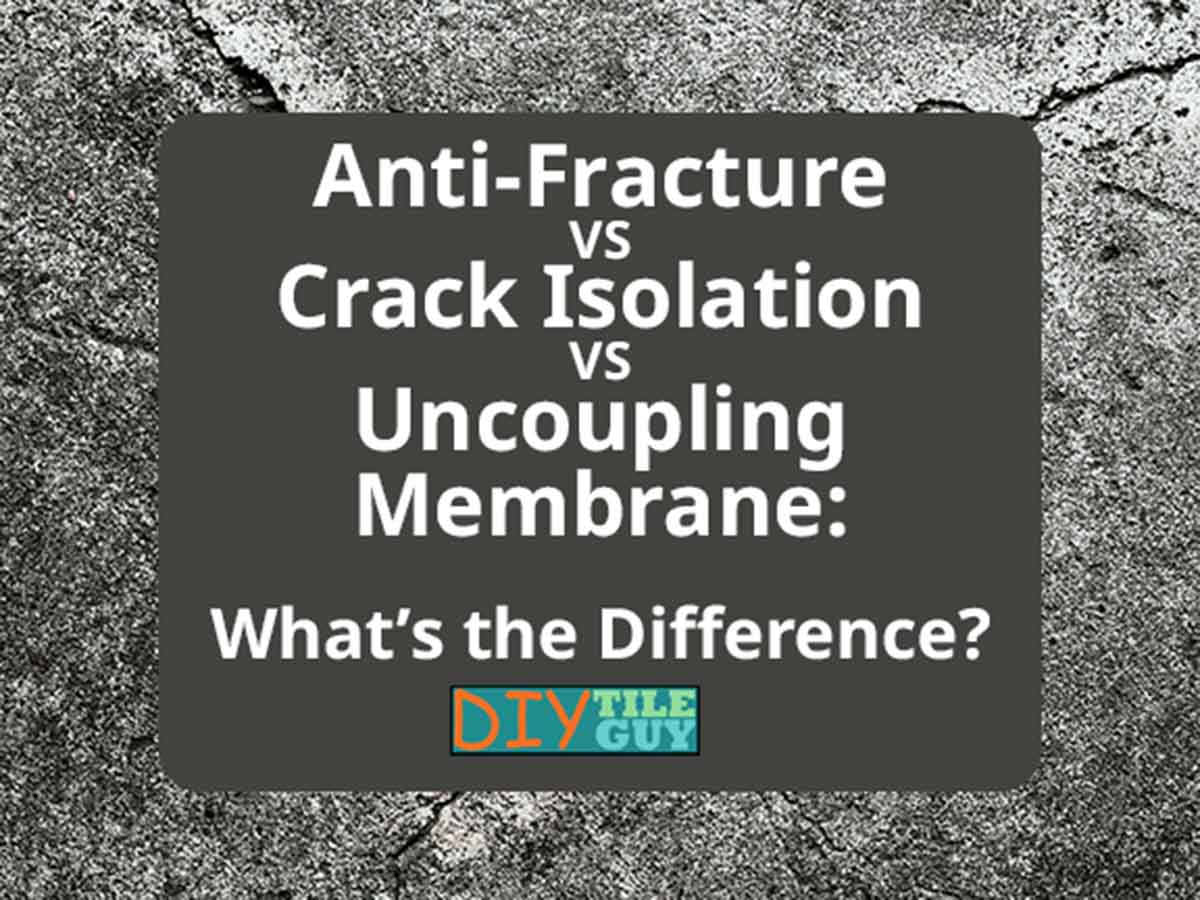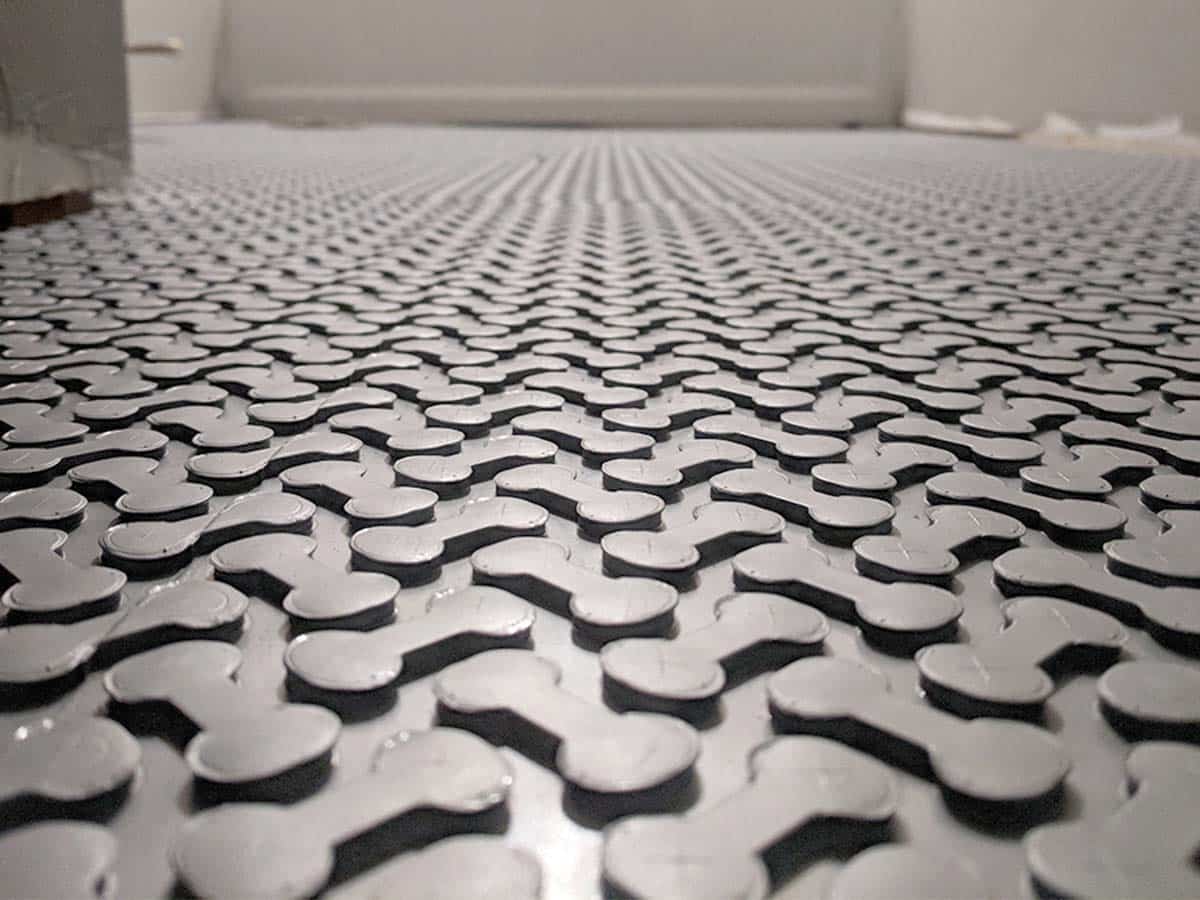You don’t want your tile to crack so you’re going to put some sort of crack suppressant under your tile.
Yet, as you research, you realize all of these products seem to do the same thing.
What gives? Why three different names for the same function? As the old saying goes, “the devil is in the details.”
TL;DR: A lot of products talk a big game but only one can back it up. Read on.

Estimated reading time: 5 minutes
We’ve established that there are three different terms for tile underlayment products you can purchase that at least sound like they’ll inhibit your tile from cracking.
These three terms are:
- Anti-Fracture
- Crack Isolation
- Uncoupling
But not all three perform as advertised. First, let’s tackle each one of these.
Anti-Fracture Membranes
Let’s start by mentioning that this is not a real thing. In fact, the tile industry does not recognize the term “anti-fracture”.
Even so, you’ll find some manufacturers that use this term in the naming of their products. They are free to do so as there is no rule stating they can’t over-promise and under-deliver.
But that doesn’t change the fact that there is no product category called ‘Anti-fracture’. Further, there are no products that exist that can 100% stop tile from cracking.
Typically, when people use this term what they really are asking about is crack isolation membranes.
Crack Isolation Membranes
Crack isolation is a recognized term and a category of products.
A crack isolation membrane is a product that can help keep cracks in concrete from transferring through to the surface of the tile.
These products can come in liquid form or a sheet membrane. The liquids get painted or troweled over a floor and tile is set over it once it’s dry.
Sheet membranes are installed with some sort of adhesive. This adhesive can be thinset mortar, a glue-like adhesive, or some come with a peel-and-stick backing.
More importantly, crack isolation products are tested by an independent third party.
ANSI 118.12 Crack Isolation Membranes
Crack Isolation membranes (CIS) have been verified to keep some cracks from transferring through to the tile.
The independent organization ANSI has set some guidelines on how these products will perform. Although there are several tests that make up the standard there’s one in particular of interest.
This is where the membrane is pulled apart by a testing machine. If the machine separates 1/8 inch, or more, without cracking the tile and grout the product gets a ‘high performance’ grade for A118.12.
Theoretically, this means that a crack in concrete could separate by 1/8 inch and still not harm the tile and grout above.

Uncoupling Membranes
Uncoupling membranes are also recognized by the tile industry. Currently, there are no real standards* that they must meet to be considered “uncoupling membranes”.
However, they are trying to come up with a series of tests that, once passed, will allow certain membranes to be considered uncoupling membranes according to ANSI. As of July 2024, this standard still doesn’t exist.
Even once it does exist, it’s unlikely any type of “crack testing” will be a part of this requirement.
Uncoupling membranes are misunderstood
Most of us have seen the animation on Schluter’s Youtube video (start at 1:08) that shows how Ditra, and other uncoupling membranes work, and it seems simple to comprehend.
The uncoupling membrane insulates the tile from movement in concrete. But this claim is not tested, can’t be backed up, and isn’t a fact.
This doesn’t mean that uncoupling membranes are bad products or have no purpose. In fact, I use them on a regular basis over wood subfloors as a backerboard alternative.
However, you can’t rely on them** when it comes to keeping cracks from transferring through to the tile surface.
Putting it all together
When people talk about ‘anti-fracture’ membranes they usually are referring to crack isolation membranes. Also, some manufacturers who play fast & loose with their marketing like this term.
Crack isolation membranes are tested for performance by an independent third party. They can be expected to minimize some cracks from transferring through to the tile surface.
It should be mentioned that they don’t work over expansion joints, cold joints, or concrete that is cracking vertically.
Uncoupling membranes should have their own testing requirements soon enough but shouldn’t be relied upon to prevent cracks in concrete from transferring up through a tile floor.
Instead, they should be used as their own stand-alone product and people need to recognize that they have their own strengths and weaknesses.
Bottom line: Not all Membranes are A118.12 Crack Isolation Membranes
Don’t fall for marketing hype. If you want to minimize cracks in concrete from transferring to the tile surface look for products that meet A118.12 crack isolation standards.
Footnotes:
*Technically, there is a shear test that they must meet
**There are a couple of uncoupling membranes that have been tested as A118.12 crack isolation membranes and meet the requirements. These uncoupling membranes will have A118.12 markings on them.
Leave a Reply